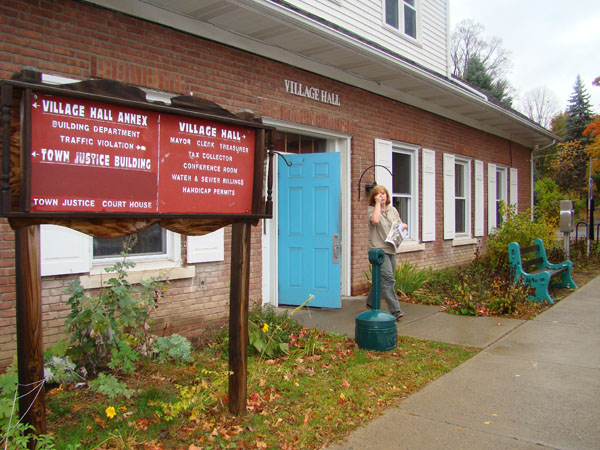

In approximately two years, the Town and Village of New Paltz could potentially merge into a single body of government, altering the way local services and departments are run.
According to Village Mayor Terry Dungan, town and village municipal boards will be receiving recommendations on a possible restructuring from the New Paltz-based firm Fairweather Consulting after a year-long study is completed sometime this July.
The firm is currently looking at a full range of options that could be voted upon by the public and implemented over the next few years, which include cooperative agreements between town and village departments and complete municipal consolidation.
“It’s something that comes up periodically and it’s coming from people that are concerned about the costs,” Dungan said. “There’s a concern of redundant taxation and if we just had one government, things would be simpler.”
According to Dungan, once the Fairweather Consulting study is complete the Town Board or Village Board of Trustees could initiate a public vote on the firm’s recommendations or the public could petition for a change.
Dungan said the consolidation of the town and village has been a widely discussed topic over the past 20 years, and the elimination of the village government was previously put to a public referendum.
Although the option was defeated during a vote, he said it could be brought back again in 2011.
“You [wouldn’t] have a village anymore and the town has no choice but to take responsibility for it,” Dungan said. “So, I guess one of the drawbacks to that is everybody who lives in the town has no voice in the matter. It’s like, ‘here, have the village.’”
Dungan said the study is also looking at the option of a coterminous town and village, which would allow the village to annex the entire property of the town and share its borders.
If this option were decided upon, Dungan said the village would be responsible for governing the entire area.
“You can dissolve a village but you can’t dissolve a town,” he said. “So, there’s one day a year when the village board meets as the town board to conduct specific town business that the town has to do, but other than that, it functions as a village.”
Dungan said he is in support of this method because he believes village government is more efficient than town government.
“Your town supervisor, your town clerk and your town highway superintendent are all independently elected,” he said. “If they don’t get along well, your town functions very badly. With a village, you have your mayor, your board of trustees and that’s it. Everybody under them is a hired professional, and they do what the board directs. It’s much more straightforward and things happen as they are supposed to.”
According to Town Supervisor Toni Hokanson, if the town and village were to undergo full consolidation there would be only one board, and either a mayor or a supervisor would exist depending on the form of government selected.
She said both a cooperative agreement and consolidation of some town and village departments could potentially keep the current structure of two boards, a mayor and a supervisor, but each could still have the potential to save money.
“There are currently four full-time and two part-time staff combined for both departments,” she said. “If consolidated, the work could be done by less staff and there is a savings. Consolidating highway and building departments are on a larger scale and also have potential [for savings].”
Hokansom said other advantages of consolidation, include a reduction in bureaucracy, less fighting and a more efficient delivery of town and village services.
If consolidation were to occur, Dungan said the town and village could share a purchasing department and could enjoy greater purchasing power.
“Things like health insurance and other supplies and services could be less expensive that way,” he said.
Dungan said there has also been discussion of consolidating the highway services in New Paltz, so that the Town of New Paltz Highway Department could manage the village streets.
While Hokanson is waiting to choose her favorite option, she said she looks forward to the consulting firm’s analysis.
“The state is actively encouraging the reduction of the number of municipal governments,” she said. “To this end, the state offers grant funding for studies and is offering three years of enhanced state aid to any government consolidations. In these economic times, [that’s] a big incentive.”
After interviewing a consultant responsible for over three-dozen consolidation studies, Dungan said he was told in almost every case when changes were made to municipalities that there was very rarely full consolidation.
Dungan said he doesn’t see the topic of a possible merger or consolidation greatly affecting the mayoral race in May because the final decision and implementation would not occur for a few years. And if New Paltz were to eventually have a coterminous government, he said there would most likely still be a mayor.
“Whomever you elect needs to be someone who is going to manage it well,” he said. “Whether it’s a small village or a large village, really the issues are the same. I’m sure it will come up in the discussions. We’ll really have to wait and see.”
